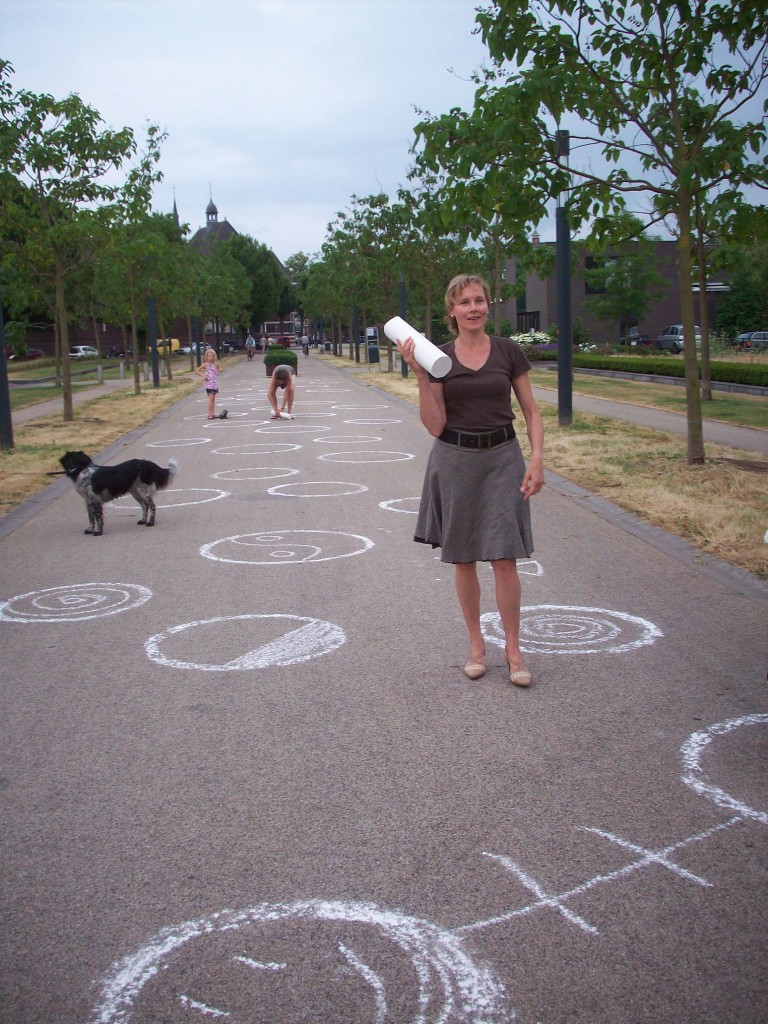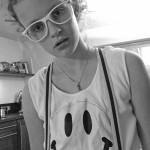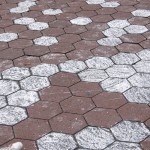Promised Eveline to be on the lookout for play stuff - moments of free-form play…
Roomnight play time
Pictures from the Roomnacht – did an Experiment no. 007 game there, using the larger-than-life crayons. Very successful! Had an art crowd this time. Lots of people drawing, as you can see.
More details later – have to grab some sleep now. Lady from Post Dordt coming to talk with us tomorrow, need my wits about me.
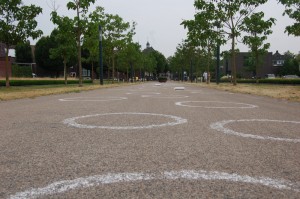
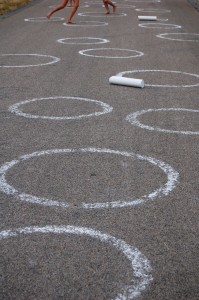
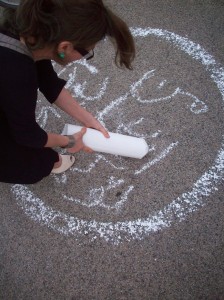
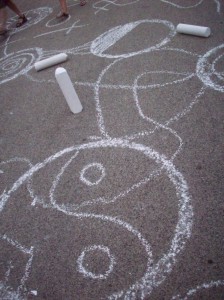
Later: Lady from Post Dordt came and went, time for some more notes on the Roomnight thing. I’m sitting in our new studio space at AWK, using the school computer, and enjoying being in the heart of Utrecht town, city noises all around and feeling part of it.
In my essay, I define a game as ‘a cognitive and physical environment, consisting of a narrative, a goal, equipment and rules‘. I’m going to analyse the Roomnight game here on the basis of this.
What I did at Roomnight was create a physical environment with equipment (circles, big chalks) in a non-playspace (an avenue for bikes and pedestrians). It was created in an art context – people on their way from museum to museum passed. Totally different crowd than in Amsterdam, many more players. An estimated 50% of all passers-by played. What I did not do – even when asked – was give any explanation. I gave no narrative, goal or rules. My assistent Laura invited some people to play, and from there on things just rolled, and people took up the game if and as they pleased.
First of all, people stepping into the physical environment created a cognitive environment by their acceptance of their role as players. Some did so in an obvious way – visible in different body language and/or expressed in their language. With some the transition was more inward, expressed only by the actions that followed. But the switch from ‘normal’ to ‘playful’ mental state had to happen in order to function within the structure of the game.
What I noticed happening was that players, once they’d decided to be players, started supplying the missing elements themselves.
They made the cognitive environment happen in their heads.
Some then created narrative, some set themselves a goal, some made rules
One man (age around 25) decided that outside of the circles “is the lava”, creating a narrative and making the game exiting just through that simple sentence.
Another man (age around 55) made rules: “don’t walk on the chalked lines” and – for fun – started to enforce them. All passers-by were spoken to in a very strict tone of voice, and explained just how this thing was meant to function. He was very good at this and made lots of people respect his rules.
A couple of young women (age around 20) decided that they wanted to jump from circle to circle, their goal was to use them all, not missing or doubling – which wasn’t easy.
A lot of people drew games, paths, or simply wrote ‘I was here’ or their names.
Note: there must be some instinct in people prompting them to leave traces, because this is what a lot of people did.
Note: one man stumbled on a chalk, a bycicle taxi rode over one. Check about safety issues next time. Don’t leave the chalks unattended.
| « Roomnight | <-- previous post | next post --> | Twentsche Courant » |
|---|
